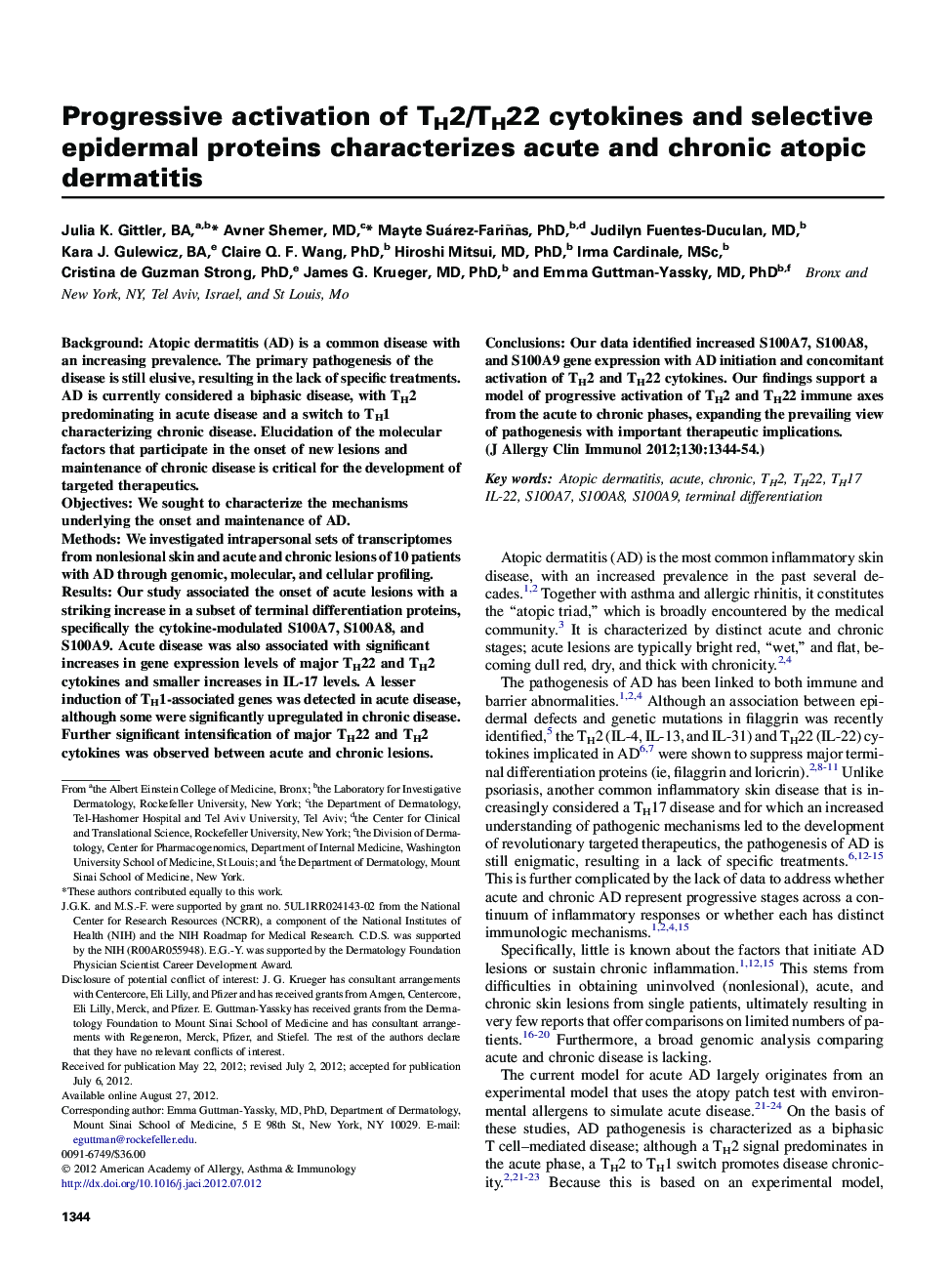| Article ID | Journal | Published Year | Pages | File Type |
|---|---|---|---|---|
| 3198311 | Journal of Allergy and Clinical Immunology | 2012 | 11 Pages |
BackgroundAtopic dermatitis (AD) is a common disease with an increasing prevalence. The primary pathogenesis of the disease is still elusive, resulting in the lack of specific treatments. AD is currently considered a biphasic disease, with TH2 predominating in acute disease and a switch to TH1 characterizing chronic disease. Elucidation of the molecular factors that participate in the onset of new lesions and maintenance of chronic disease is critical for the development of targeted therapeutics.ObjectivesWe sought to characterize the mechanisms underlying the onset and maintenance of AD.MethodsWe investigated intrapersonal sets of transcriptomes from nonlesional skin and acute and chronic lesions of 10 patients with AD through genomic, molecular, and cellular profiling.ResultsOur study associated the onset of acute lesions with a striking increase in a subset of terminal differentiation proteins, specifically the cytokine-modulated S100A7, S100A8, and S100A9. Acute disease was also associated with significant increases in gene expression levels of major TH22 and TH2 cytokines and smaller increases in IL-17 levels. A lesser induction of TH1-associated genes was detected in acute disease, although some were significantly upregulated in chronic disease. Further significant intensification of major TH22 and TH2 cytokines was observed between acute and chronic lesions.ConclusionsOur data identified increased S100A7, S100A8, and S100A9 gene expression with AD initiation and concomitant activation of TH2 and TH22 cytokines. Our findings support a model of progressive activation of TH2 and TH22 immune axes from the acute to chronic phases, expanding the prevailing view of pathogenesis with important therapeutic implications.
